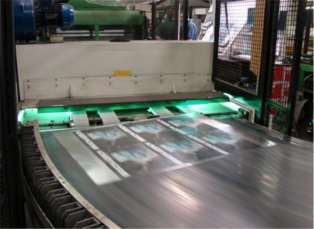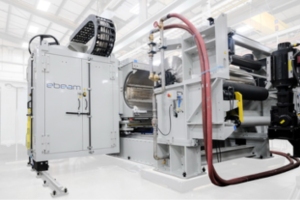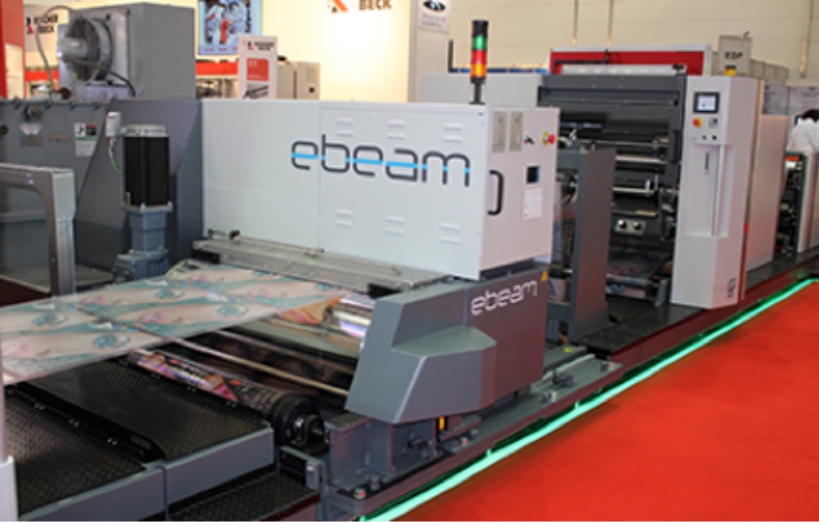Whatever happened to UV-EB (ultraviolet-electron beam) cured coatings technology? The simple answer is, “Still there. Doing just fine.” For the coil coating industry, the answer is even simpler: Never left the starting block, even though a great deal of effort went into the development of UV-EB coating technology suitable for the coil-coated building products industry. I’ll get to those developments in a bit, but first, a little history.
Go back to the 1970s, and consider how you’d coat a piece of plastic or glass or even metal, for that matter. Let’s assume that either your substrate is heat sensitive (such as plastic) or you don’t have a baking oven at your disposal. Common technologies back then would have been either an air-dry coating or two-component urethane. With the former, you would paint a part and allow sufficient time to let the solvent evaporate. For some of these technologies, solvent evaporation is all that is needed (i.e., thermoplastic acrylics), but other air-dry coatings must undergo an additional process where some oxidative crosslinking occurs. Air-dry alkyd technology is based on this kind of drying/curing.
Air-dry coatings are fine, but they typically are not suitable for many industrial applications. They lack toughness, hardness, and flexibility. Formulators in the 70s turned to two-component urethane technology (the second technology mentioned above). A two-component urethane has, obviously, two parts, or components; the term “2K” is often substituted for the term “two-component”. One of the components contains a resin that has functionality (usually a hydroxyl group) that reacts with the other component, an isocyanate resin. Hydroxyl + isocyanate = urethane. 2K urethane technology is great, but—without heat—it takes some time (let’s say 20 or 30 minutes) for the reaction to take place. In the 70s, you simply settled for painting a part and letting it sit in a dust-free environment for the necessary length of time. When the part was cured, it was packaged, shipped, and entered the market.
Examples of articles to be painted—and which can be painted in a factory production setting—are abundant. Coatings are used for printing on paper and plastic, on plastic body parts in automotive applications, and countless others. UV-EB coating technology has two huge advantages over all other coating technologies: The rate of cure is super-fast (less than a few seconds), and the substrate does not need to be heated up. Not all UV-EB coatings are 100% solids, but many are, so there is an additional minimal-VOC advantage. UV-cured inks can be processed far faster than older oil-based inks. Your computer keyboard has a UV-cured coating covering each of the keys (which you may see getting worn off with time). EB-cured coatings have essentially the same curing mechanism, although there are a few notable differences (which we don’t have room to explore in this article).
Let’s see: Fast cure, low/no VOCs, no heating of the substrate. Certainly the first two characteristics sound perfect for a coil coating application, although our substrates are heat-tolerant, so a “no heating” benefit is not much of an advantage. A number of companies have developed both UV and EB coil coating technology that is flexible (UV-EB coatings are typically hard, brittle, and scratch-resistant) and reasonably durable outside. So why has there been such little movement toward this cool technology?
We all have a good sense of what a coil coating line looks like, including the monstrous oven through which the web passes for the curing process.

Both UV production ovens and EB production ovens have much smaller footprints. The advantages to UV-EB seem to keep adding up. However, both UV and EB ovens are powered by electricity. When natural gas was expensive, these alternate curing technologies sounded better and better. But gas is now fairly cheap.
UV Curing “Oven” (about 20 feet long)

UV Curing “Oven” (about 20 feet long)

©Ligonauer, December 2015
 Images provided by ebaum Technologies
Images provided by ebaum Technologies
Of course, the UV-EB devotees always talk in terms of usable energy. Their claim is that about 100% of UV-EB’s energy goes into the reaction process, compared with only about 10% to 30% of the energy from burning gas used to cure a coating. The gas-oven guys quote much higher conversion efficiencies. This is, in part, because modern gas ovens, oxidizers, and heat-recovery systems are more integrated, more efficient, and more flexible than they have ever been before.
The coil coating industry already has a very efficient process. To learn if UV-EB is any better, you would need to pull out the gas-fired oven and replace it with a UV and/or EB oven. Such a simple suggestion; such a complex engineering process. To date, nobody has had the time, willingness, and/or money to tackle such a project. And there are many unknowns when dealing with coil coating and UV-EB coatings. Can you roll coat 100% solid material as effectively as we currently apply coil coatings today? Will the UV-EB coatings really meet all of the performance requirements for hardness, flexibility, durability, etc.? How will a UV-EB coating perform on one of those “bad-hair days” when just the right combination of all the bad things line up to create failure that never could have been contemplated?
Fast-cure technology for heat-sensitive substrates remains the current niche for UV-EB technology, representing about 2% of all of coatings produced today. This technology is important for certain applications, but a major investment would be required to learn whether it is actually practical to paint a curing coating on metal.
Keep the conversation going and post your comments on this topic. To dive deeper into the discussion on the latest news and trends in the industry, be sure to share these posts via Facebook, Twitter, and other social media using the buttons below; join the NCCA LinkedIn group here. The NCCA LinkedIn group provides a forum for discussing issues pertinent to the process, industry participants, and users and potential users of pre-painted metal.
David Cocuzzi, NCCA Technical Director
October 2017
 中文
中文 English
English





